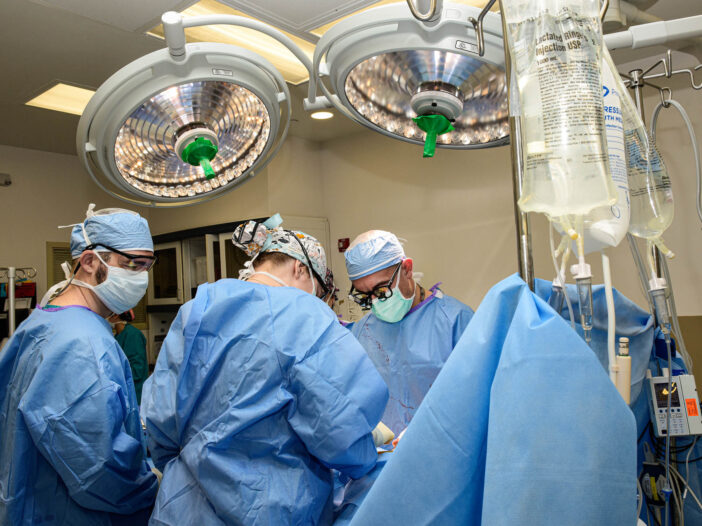
Coronary bypass surgery is a treatment for patients with coronary artery disease (CAD) [link to CAD page] and restores blood flow to your heart. The procedure involves taking a healthy blood vessel from your leg, arm or chest and bypassing the blocked artery to connect the blood vessel to your heart.
Depending on the severity of your CAD, restoring blood flow to your heart may require more than one bypass.
While this surgical procedure doesn’t cure CAD, it can ease many of the symptoms and reduce the risk of heart attack and dying of heart disease.
Why Do You Need Coronary Bypass Surgery?
You may need coronary bypass surgery if:
- You have more than one blocked artery and the heart’s main pumping chamber, the left ventricle, isn’t functioning well
- You have severe chest pain caused by CAD
- Your blocked artery can’t be fixed by other methods, such as angioplasty and stent placement [link to angioplasty and stent page], or you had another procedure and the artery became blocked again
- Your left main coronary artery is severely narrowed or blocked
You may also have coronary bypass surgery in the event of a heart attack if other treatment options are not working.
Getting Ready for Coronary Bypass Surgery
Before your surgery, you may need to have several diagnostic tests, including blood work, a chest X-ray and/or an angiogram, that will give the surgical team more information about your blocked arteries.
Additionally, you may be provided with specific dietary, medication and exercise restrictions prior to being admitted to the hospital.
You’ll also want to pack a bag with any of the personal items, such as medications, clothing, toothbrush and toothpaste, you will want during your hospital stay.
What to Expect During Coronary Bypass Surgery
Surgery typically takes between three and six hours. It requires general anesthesia, which means a breathing tube will be placed in your mouth to breathe for you during and immediately after the surgery.
The surgeon will cut a 6- to 8-inch incision in the middle of your chest to open up your chest cavity. Once the chest is open, the heart is temporarily stopped with medication and a heart-lung machine takes over to circulate blood to the body.
The surgeon will take a section of a healthy blood vessel, called a graft, typically from inside the chest wall or lower leg, and attach it to the blocked artery so blood flow is redirected around the blocked artery.
When the graft is in place, the heart-lung machine will be turned off and your heartbeat will be restored. The surgeon will wire your chest bone closed and close up the incision in your chest with stitches or staples.
Recovering From Coronary Bypass Surgery
After surgery, you can expect to spend a few days in the cardiovascular intensive care unit. The breathing tube will remain in your throat until you are awake and able to breathe on your own. You’ll likely have chest tubes, a catheter and IVs giving you medication, while other equipment monitors your heart rate and oxygen saturation levels.
You will begin cardiac rehabilitation [Link to: https://old.cmhapps.org/heart-and-vascular/heart-and-vascular-services/cardiac-rehabilitation-program] while in the hospital. Your therapist will give you exercises to do on your own after you are discharged. He or she will also discuss important diet and lifestyle changes you will need to make in order to have a successful recovery.
As long as there are no complications, you can expect to be in the hospital for around a week. Total recovery will take between six and 12 weeks.
You will continue to be monitored in our outpatient clinic upon discharge.
